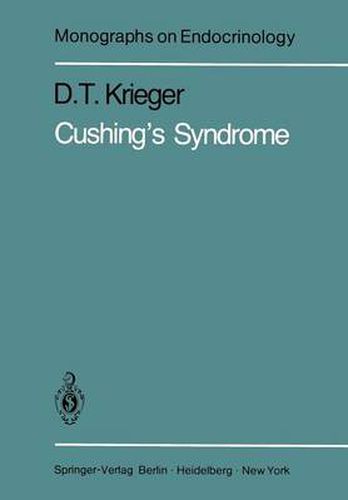Readings Newsletter
Become a Readings Member to make your shopping experience even easier.
Sign in or sign up for free!
You’re not far away from qualifying for FREE standard shipping within Australia
You’ve qualified for FREE standard shipping within Australia
The cart is loading…






This title is printed to order. This book may have been self-published. If so, we cannot guarantee the quality of the content. In the main most books will have gone through the editing process however some may not. We therefore suggest that you be aware of this before ordering this book. If in doubt check either the author or publisher’s details as we are unable to accept any returns unless they are faulty. Please contact us if you have any questions.
The unraveling of our knowledge of the functions of the adrenal gland constitutes one exciting development of modern medicine and biochemistry. We owe these advances to the felicitous cooperative efforts of the clinical investigator and the biochemist. Three centuries elapsed between the first recorded anatomical descrip tion of the adrenals and the demonstration by Dr. Addison in the mid-nineteenth century of the fatal results of the destruction of these glands by disease. It became evident from this observation that the adrenals secreted a factor or factors essential to life. It took approximately 90 years to isolate this elusive vital factor - cortisone - from beef adrenal cortices, independently by both Reichstein and his co-workers in Basle and Kendall and his group in the United States and another 10-15 years before it became more generally available for experimental and clinical use. It is perhaps difficult to believe that as recently as 35-40 years ago, before cortisone and cortisol were clinically available, the surgical removal of a benign adrenal cortical tumor in patients with Cushing’s syndrome was associated with a prohibitive postoperative mortality rate. Within 12-36 h after operation, most of such patients developed an intractable state of shock, which was not manifested by significant electrolyte abnormalities or hypoglycemia and was unresponsive to the usual treatment for shock plus the generous use of salt-retaining hormone.
$9.00 standard shipping within Australia
FREE standard shipping within Australia for orders over $100.00
Express & International shipping calculated at checkout
This title is printed to order. This book may have been self-published. If so, we cannot guarantee the quality of the content. In the main most books will have gone through the editing process however some may not. We therefore suggest that you be aware of this before ordering this book. If in doubt check either the author or publisher’s details as we are unable to accept any returns unless they are faulty. Please contact us if you have any questions.
The unraveling of our knowledge of the functions of the adrenal gland constitutes one exciting development of modern medicine and biochemistry. We owe these advances to the felicitous cooperative efforts of the clinical investigator and the biochemist. Three centuries elapsed between the first recorded anatomical descrip tion of the adrenals and the demonstration by Dr. Addison in the mid-nineteenth century of the fatal results of the destruction of these glands by disease. It became evident from this observation that the adrenals secreted a factor or factors essential to life. It took approximately 90 years to isolate this elusive vital factor - cortisone - from beef adrenal cortices, independently by both Reichstein and his co-workers in Basle and Kendall and his group in the United States and another 10-15 years before it became more generally available for experimental and clinical use. It is perhaps difficult to believe that as recently as 35-40 years ago, before cortisone and cortisol were clinically available, the surgical removal of a benign adrenal cortical tumor in patients with Cushing’s syndrome was associated with a prohibitive postoperative mortality rate. Within 12-36 h after operation, most of such patients developed an intractable state of shock, which was not manifested by significant electrolyte abnormalities or hypoglycemia and was unresponsive to the usual treatment for shock plus the generous use of salt-retaining hormone.